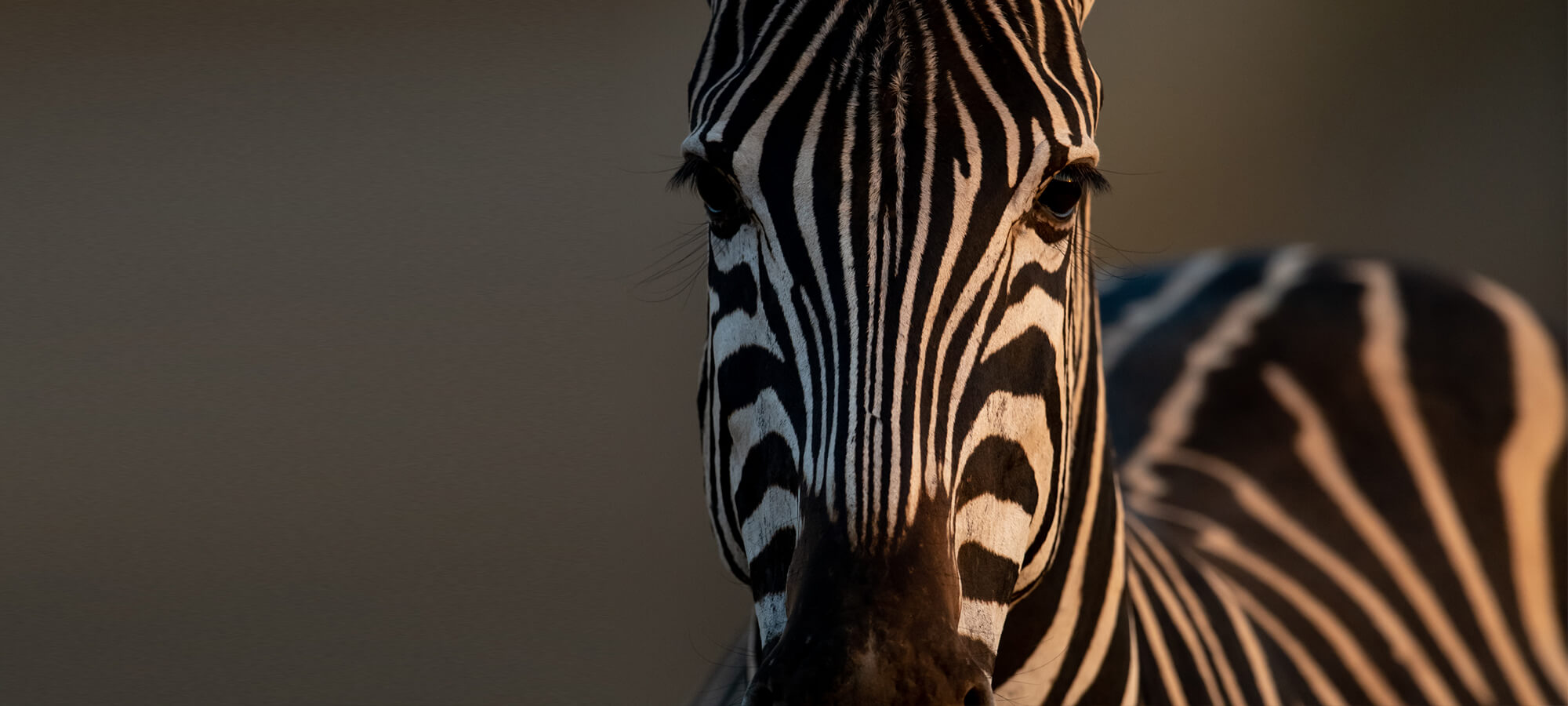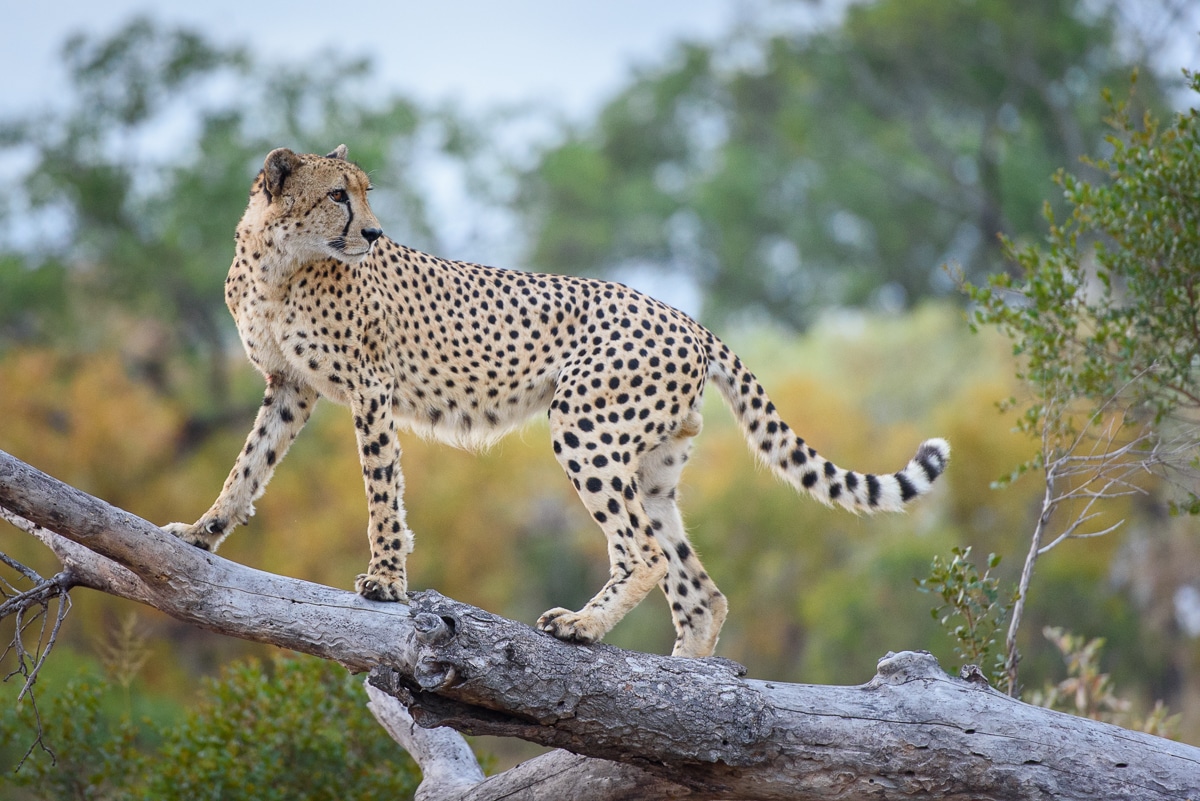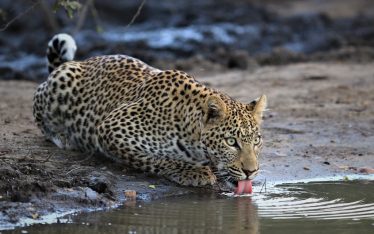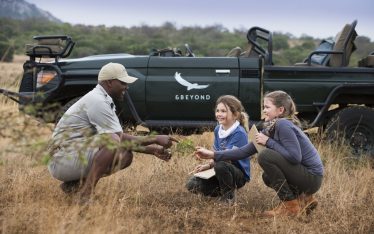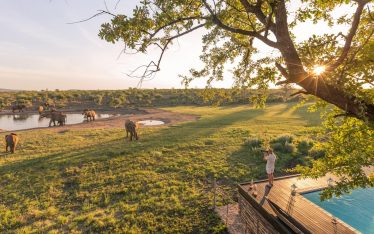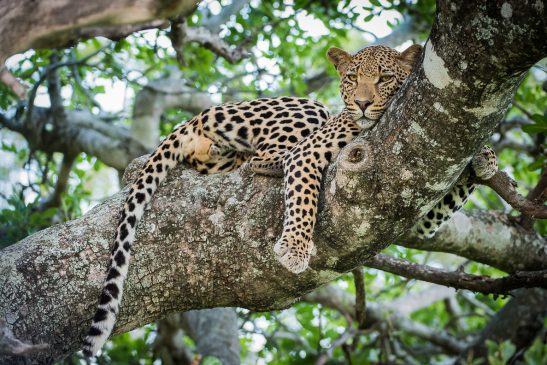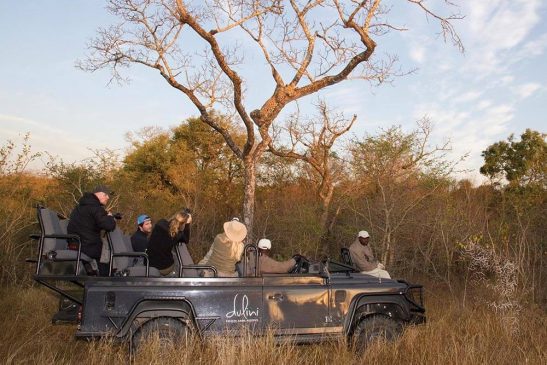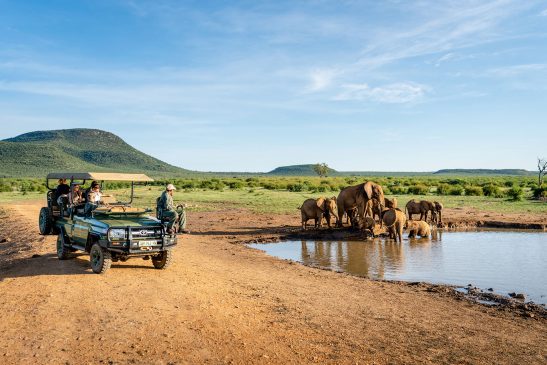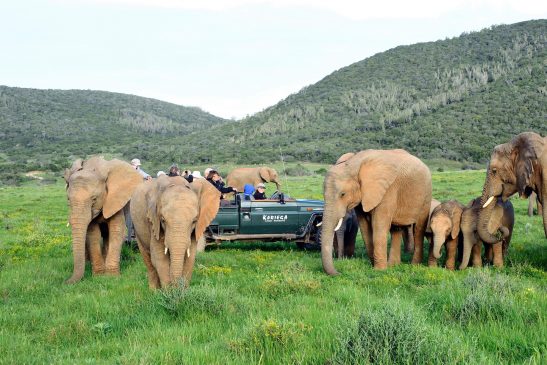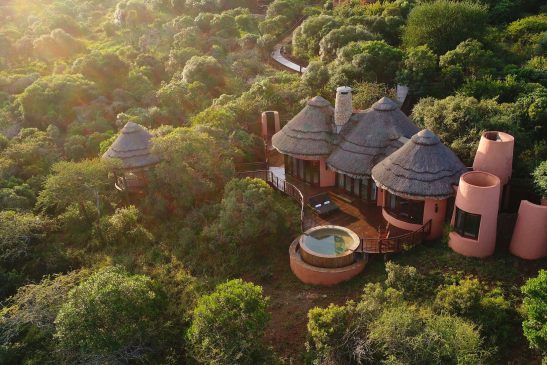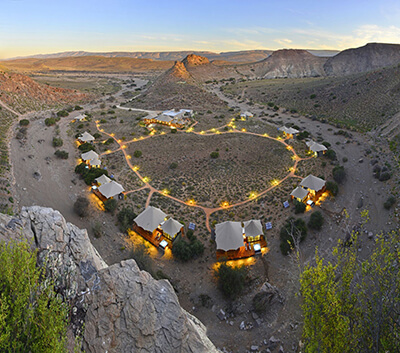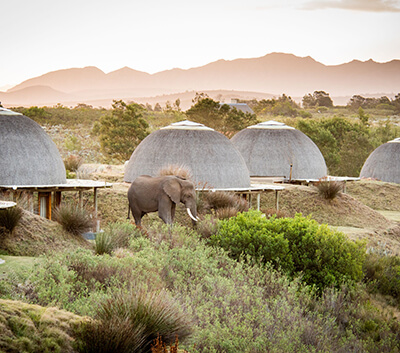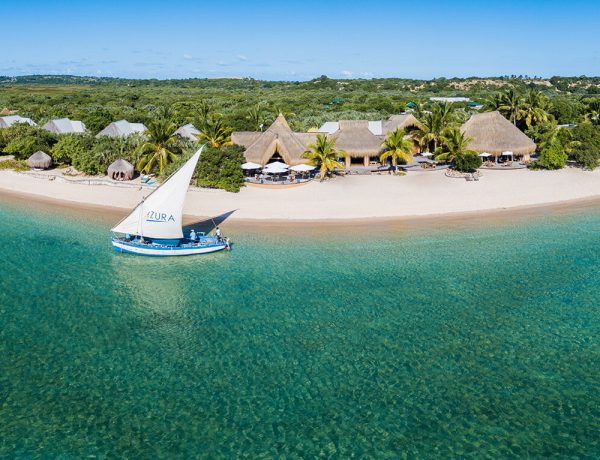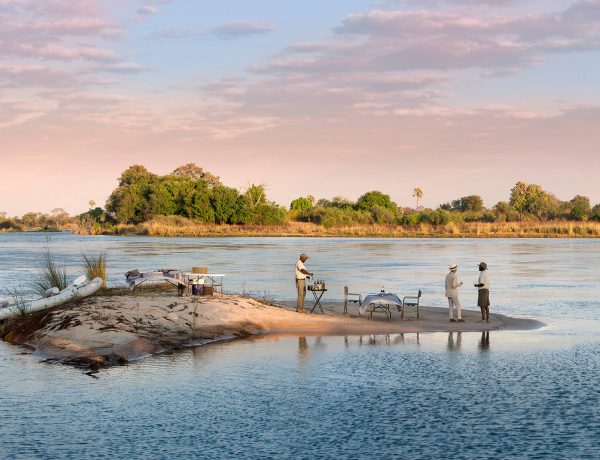Going on safari is never predictable, and that’s part of the magic. While official records boast over 147 species of mammals and more than 500 species of birds in the Kruger National Park, the truth is: you’re not going to see them all. Some animals are elusive, others are nocturnal, and many are scattered across vastly different ecosystems within the park.
From dry, open savannahs in the central region to lush riverine forests in the south and mopane woodlands in the north, the Kruger is a patchwork of habitats, and wildlife adapt accordingly. This means that your chances of seeing certain species depend heavily on time, location, season, and sometimes a little luck .If you are planning a safari in the Kruger National Park it is with utmost importance to understand the fundamentals of the reserves and its relationship with the wildlife.
Why Wildlife Sightings in Kruger National Park Vary
The Kruger National Park is massive, nearly 20,000 square kilometres stretching across a range of ecosystems. From dense woodlands and mopane thickets in the north to open savannahs and riverine bush in the south, different regions support different species. Animals have evolved to thrive in specific habitats:
- Leopards favour rocky outcrops and thick brush for stealth and ambush hunting.
- Elephants migrate between areas in search of food and water, often moving hundreds of kilometers annually.
- Cheetahs need wide open plains to use their speed and spot prey from a distance—making them more common in specific private reserves.
- Rare species like pangolins, aardvarks, or caracals are strictly nocturnal, shy, and masters of camouflage—sightings are fleeting and often left to luck (or night drives in private reserves).
This incredible diversity means that what you might see in Southern Kruger can differ completely from what you’ll find in Northern Kruger, even though they’re part of the same Greater Kruger ecosystem. The terrain determines who lives there, how they hunt or hide, and when they’re most active.
Hidden Wildlife in Kruger
It’s also important to understand the rhythms of the bush. Many species are nocturnal, which means they only emerge after dark, lions on the prowl, porcupines rustling through the undergrowth, civets and genets slinking through the shadows. If you’re staying in the public park, you might miss this world entirely. But in private game reserves, where night drives are allowed, a whole different safari experience unfolds.
And even during the day, some animals just aren’t easy to find. Leopards are famously elusive, sometimes lying silently in trees just a few meters from the road, completely invisible to the untrained eye. Rhinos are often quiet and shy, especially in areas where they’ve been poached in the past. And species like wild dogs roam in packs across huge territories, making sightings rare and unpredictable.
Best Timeframe for Wildlife Sightings in Kruger
One of the biggest misconceptions among first-time visitors is thinking they’ll see the Big Five (lion, leopard, rhino, buffalo, elephant) in a single game drive, or even within 48 hours. While it’s possible (and occasionally happens), most wildlife experts recommend staying at least 4 nights in Kruger National Park to increase your chances of seeing a wide range of species. Why?
- Different animals are active at different times of day.
- Predators often move at night or early morning.
- Herbivores migrate between areas depending on food, water, and weather.
- Patience and persistence are often rewarded with extraordinary, natural behavior – mating rituals, territorial disputes, or even hunts.
Spending more time in Kruger also allows you to explore various regions of the park, each with its own character and cast of creatures. From watching hippos wallow in river bends to hearing hyenas whoop under the stars, every corner of the reserve has a new story to tell. Below is a list of animals that you will actually see on a safari in the Kruger National Park:
1. Lion
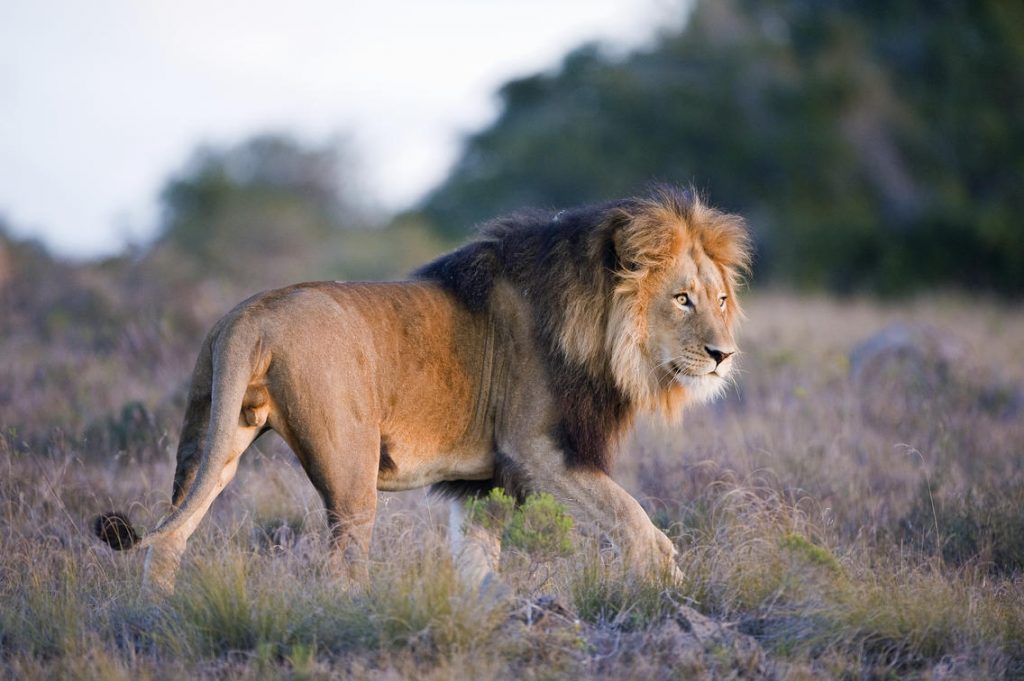
Lions are iconic apex predators of Kruger, living in social units called prides, typically comprising around 12 individuals—though some “super prides” may number over 30. Roughly 1,600–1,720 lions are currently estimated in Kruger. Males form coalitions to defend territory, while females coordinate hunts and raise cubs communally. They rely on stealth and teamwork to ambush prey like zebra and buffalo, mainly during the night, helping regulate herbivore populations.
2. Leopard

Solitary and stealthy, leopards blend into dense woodland and thickets thanks to their rosetted coats. They are powerful ambush predators, often dragging prey into trees. Kruger supports about 1,000 leopards, primarily active at night. Their presence helps control medium-sized herbivore and primate populations, reducing competition with larger carnivores.
3. African Elephant
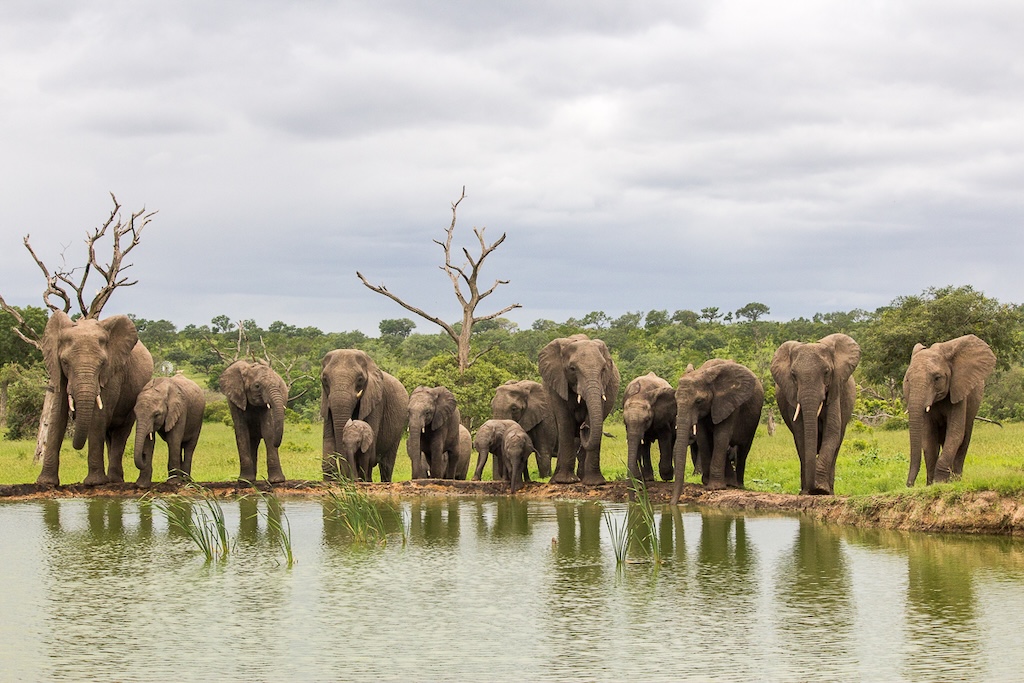
With current estimates ranging from 13,700 to 22,000, Kruger’s elephants are critical to ecosystem function. These matriarchal giants reshape landscapes by toppling trees, digging waterholes, and dispersing seeds. Weighing up to 6 tonnes, elephants can travel over 40 km a day in search of food and water, consuming up to 150 kg of vegetation daily.
4. African Buffalo
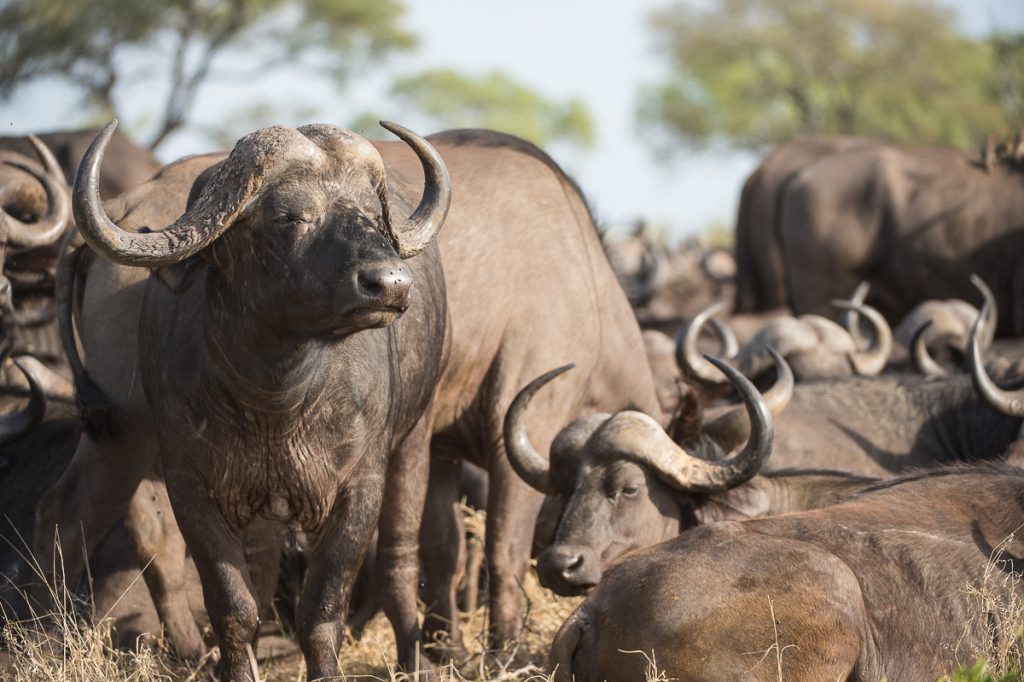
Kruger’s buffalo population is robust, with around 37,500 individuals. These large grazers form tightly knit herds and are known for their unpredictable nature and strong defensive behavior. Buffalo are a primary prey species for lions and play a vital role in maintaining healthy grasslands through constant grazing.
5. Rhinoceros (White and Black)
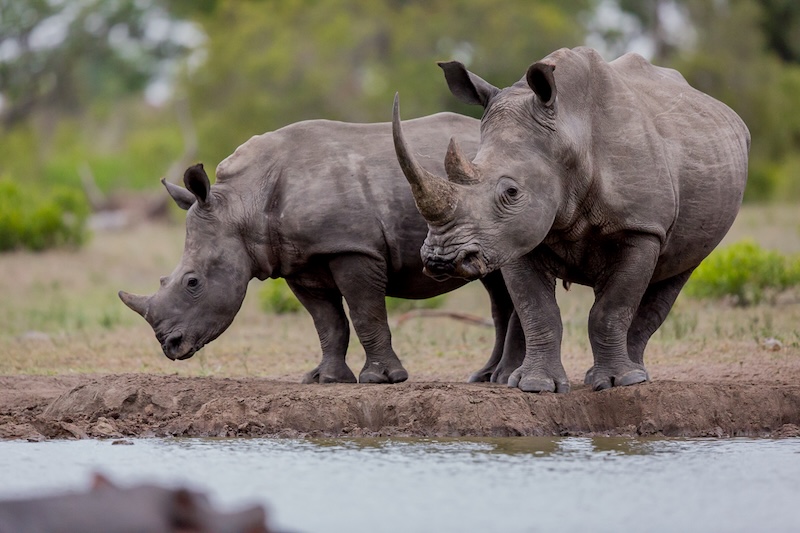
Kruger is home to both species of rhino: the more numerous white rhinos (~10,500) and the critically endangered black rhinos (~300). White rhinos are grazers, preferring open plains, while black rhinos are browsers favouring denser brush. Both are targeted by poachers, and SANParks continues to invest in anti-poaching and habitat protection efforts.
6. Hippopotamus
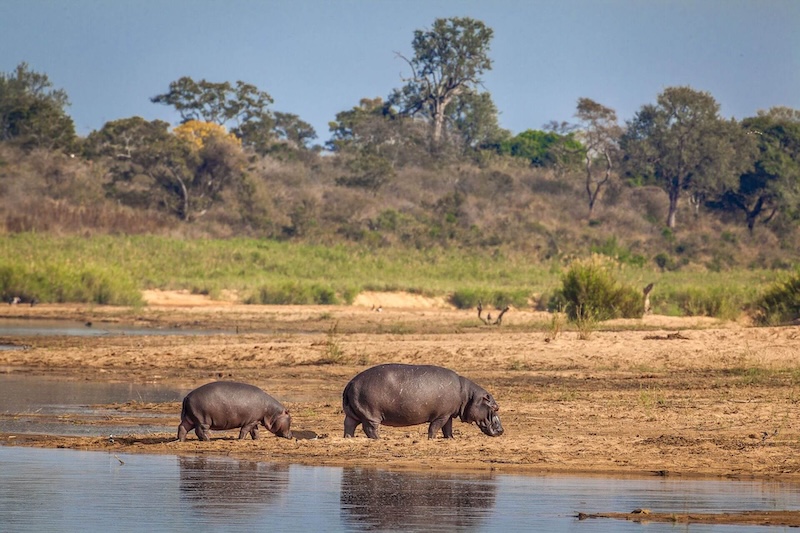
Hippos, numbering around 3,100, spend their days in rivers and emerge at night to graze. Though herbivorous, they’re highly territorial and considered among Africa’s most dangerous animals. Hippo dung enriches aquatic ecosystems, benefiting fish, birds, and other riverine life.
7. Giraffe

Giraffes number between 6,800–10,300 in Kruger and are browsers that help shape savanna tree dynamics. Their height gives them access to high foliage, while their powerful legs can deter predators. Giraffes often live in loose social groups and communicate through low-frequency sounds.
8. Zebra
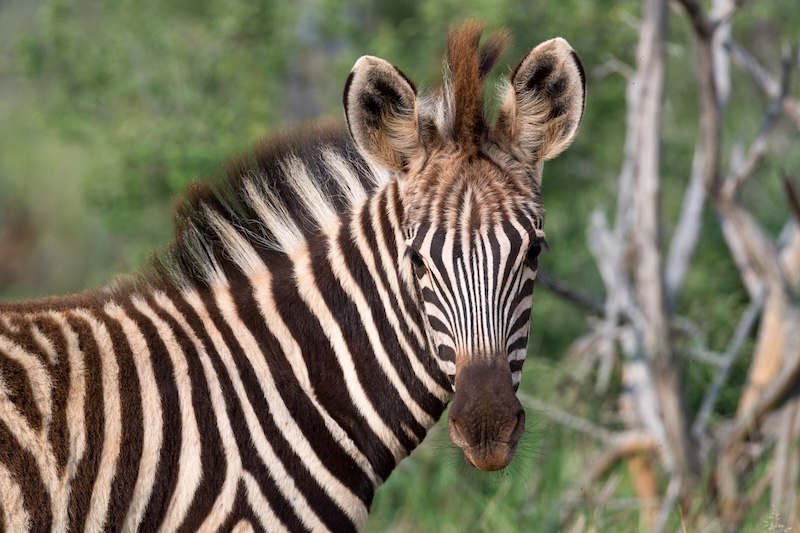
An estimated 23,700–35,300 zebras roam Kruger’s grasslands. Their stripes may confuse predators and assist with thermoregulation. Zebras form large herds and often mingle with wildebeest, grazing in tandem. As key grazers, they maintain grassland health and support large predator populations.
9. Cheetah
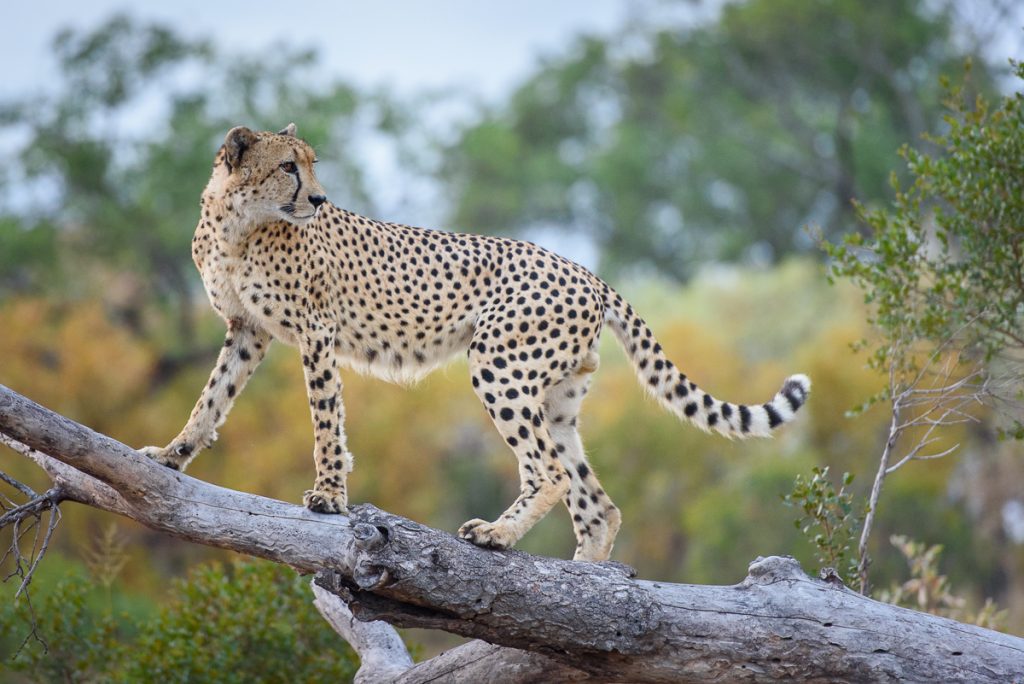
Kruger holds a modest population of around 120 cheetahs. As daytime hunters, cheetahs reduce competition with nocturnal predators. Their speed—up to 100 km/h—helps them hunt small antelope in open terrain. Vulnerable to losing kills to lions or hyenas, cheetahs are a strong indicator of ecosystem health.
10. African Wild Dog
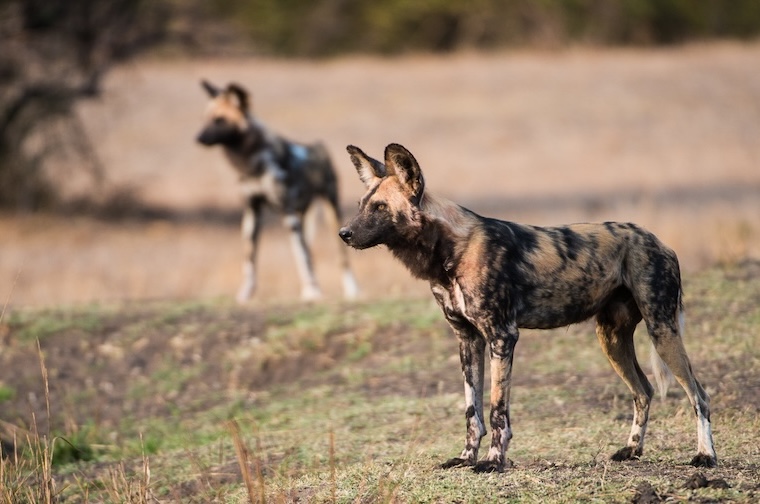
One of Africa’s rarest predators, wild dogs number between 200–450 in Kruger. They live in highly coordinated packs and boast a remarkable 80% hunting success rate. Wild dogs are endangered due to habitat loss and disease, making their survival a major conservation priority.
11. Spotted Hyena
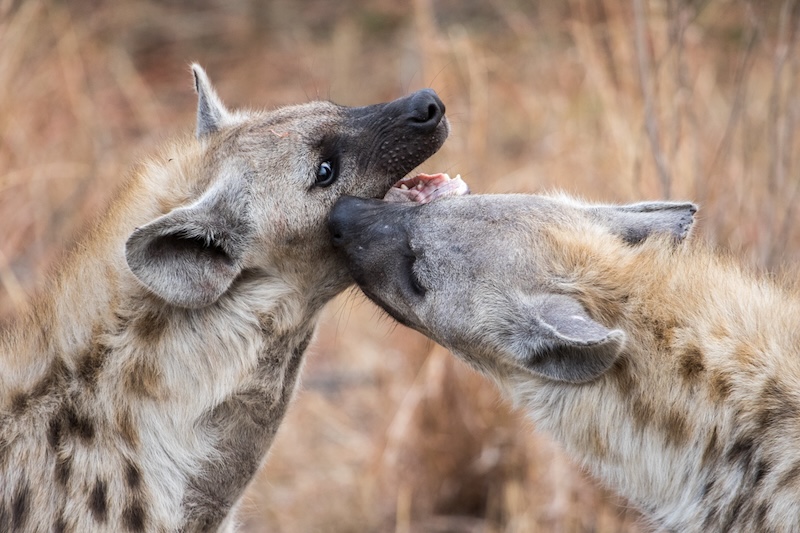
Spotted hyenas, with estimates of 3,500–5,300, live in matriarchal clans and are both hunters and scavengers. Known for their bone-crushing jaws and eerie vocalizations, they play a crucial role in recycling nutrients and cleaning up carrion across Kruger’s landscapes.
12. Chacma Baboon
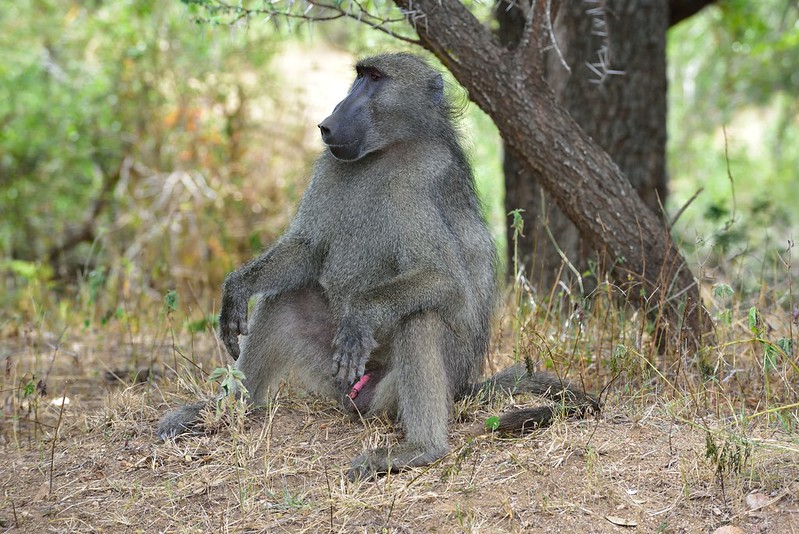
Chacma baboons live in troops of up to 100 and are widespread throughout Kruger. Their omnivorous diet and alert nature make them essential for seed dispersal and early predator detection. Baboons often benefit other species with their alarm calls and complex troop dynamics.
13. Vervet Monkey
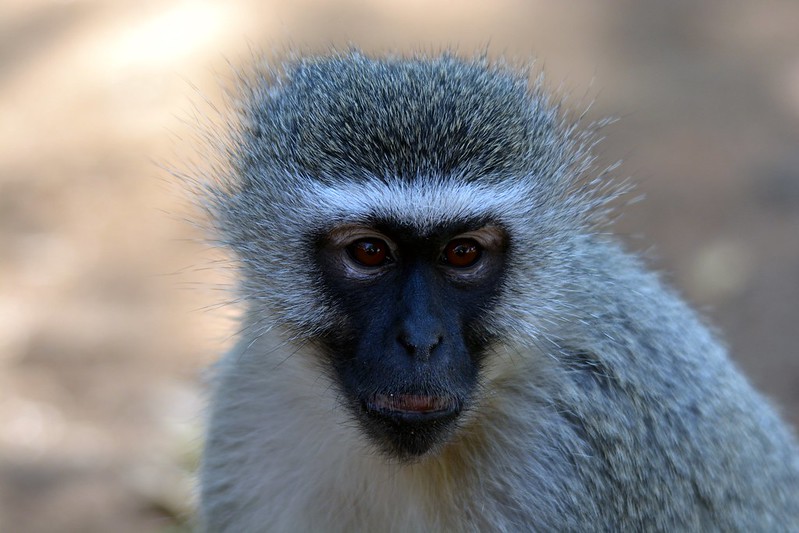
Vervet monkeys, weighing 3–6 kg, live in forested or riverine areas and move in troops. They feed on fruits, insects, and small animals, contributing to pest control and seed dispersal. Their alarm calls distinguish between types of predators, helping warn other animals nearby.
14. Warthog
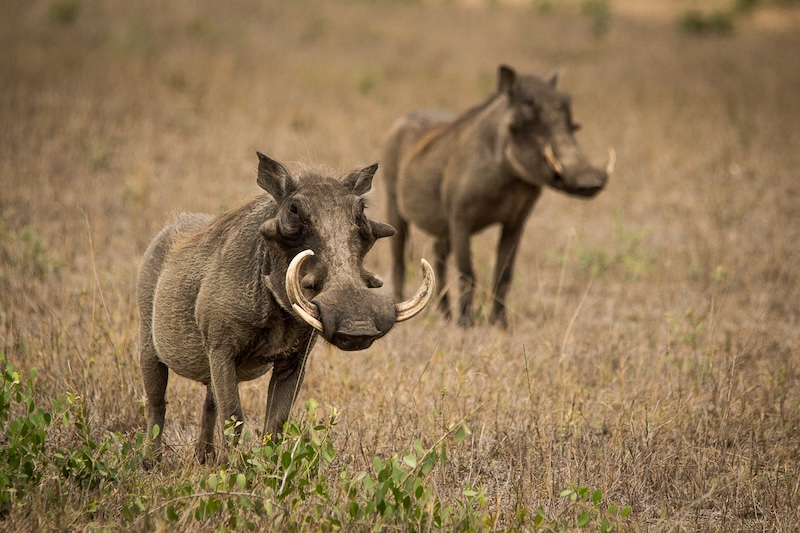
Warthogs are hardy grazers numbering 3,100–5,700 in Kruger. They often shelter in burrows, sometimes entering backward for defence. With their tusks and tough hides, they fend off predators and help aerate soil through rooting behaviour, aiding grass regeneration.
15. Antelope Species
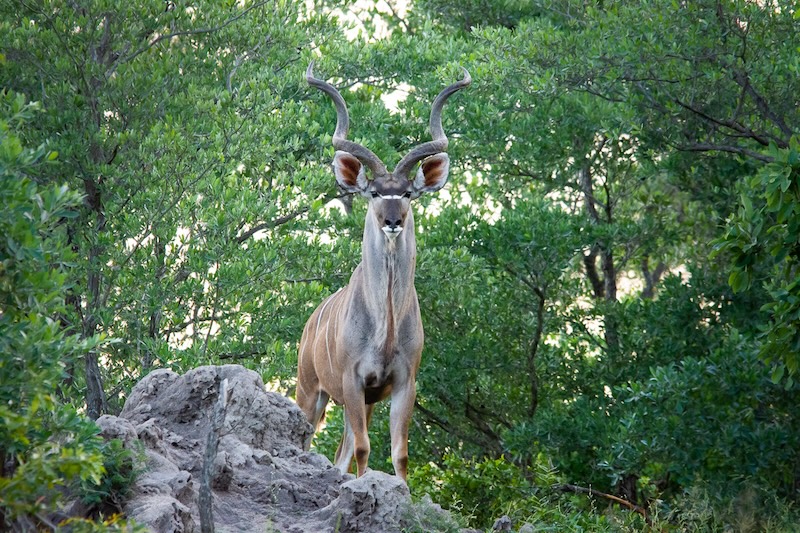
Kruger supports a rich diversity of antelope. Impala (132,000–176,000) dominate in number, followed by kudu (11,200–17,300), waterbuck (3,100–7,800), and rarer species like sable (~290), roan (~90), and eland (~460). These herbivores fill ecological niches, sustain predator populations, and maintain vegetation balance.
The Circle of Life in the Kruger National Park
One of the most striking aspects of the Kruger ecosystem is how clearly it showcases the full cycle of life in the wild. From birth to death, every moment plays a role in maintaining the delicate balance between predator and prey, growth and decay, survival and loss.
In Kruger, this cycle is visible on every drive. You might see a newborn impala taking its first steps while a nearby leopard watches from the shadows. A pride of lions might feed on a buffalo—providing not just sustenance for the predators, but eventually for scavengers like hyenas and vultures. Even what’s left behind fertilizes the soil, nourishing the plants that herbivores will rely on.
Each species, from termites to elephants, has a part to play. Predators help control herbivore populations. Scavengers clean the landscape. Insects break down organic matter, and birds signal the presence of danger or opportunity. These interactions aren’t just occasional, they’re constant and interconnected, forming an intricate web of survival.
Why Private Game Reserves Are Best for Wildlife Viewing in Kruger
Private game reserves located within the Greater Kruger are undoubtedly the best place to see the animals, this is because the area operates under different rules than the public Kruger National Park. These privately managed reserves, such as Thornybush, Timbavati, and Klaserie game reserves allow activities like off-road driving, guided walking safaris, and night drives. Combined with limited visitor numbers and expert tracking teams, this creates a more controlled and high-quality wildlife viewing environment.
Highlights
- Off-Road Access: Guides can leave the main tracks to follow animals, leading to closer, more dynamic sightings.
- Habituated Wildlife: Animals are accustomed to safari vehicles, which allows for natural behaviour and unobstructed viewing at close range.
- Limited Vehicles: Only a few vehicles are allowed per sighting, reducing disturbance to wildlife and improving the overall experience.
- Unique Activities: Private reserves offer night drives to view nocturnal species and walking safaris that focus on smaller details often missed from vehicles.
- Expert Guiding: Highly trained trackers and guides interpret animal behaviour, signs, and the environment, enhancing understanding and sightings.
- Personalised Safaris: With fewer guests per vehicle or lodge, experiences can be tailored to individual interests such as photography, birding, or big cat tracking.
Why a Kruger Safari Is About the Experience
Kruger isn’t just about the animals, it’s a living, breathing wilderness filled with unforgettable beauty. Towering baobab trees, sun-drenched acacia savannahs, and meandering rivers teeming with birdlife create a backdrop that is as much a part of the safari as the animals themselves. Sunrises glow red over the horizon, dust trails glisten in the golden light, and the sounds of the bush, lion roars, birdsong, insect chirps, remind you that this is one of the last great wild places on Earth.
The longer you stay, the more your senses adjust. You begin to understand animal behaviour, interpret tracks in the sand, recognise alarm calls, and read the silent tension in a herd. Kruger becomes not just a place you visit, but a place you connect with and carry with you long after you leave.
Useful Information
If you are planning a safari in the Kruger, we recommend reading these articles to find out when to go and where to stay.
- Best time to go on Safari to the Kruger
- Kruger National Park Guide
- View all Kruger lodges
- Kruger Game Drives
- Top Luxury Lodges in the Kruger National Park
- The Greater Kruger Park Explained
For personal planning assistance and advice contact out team.
